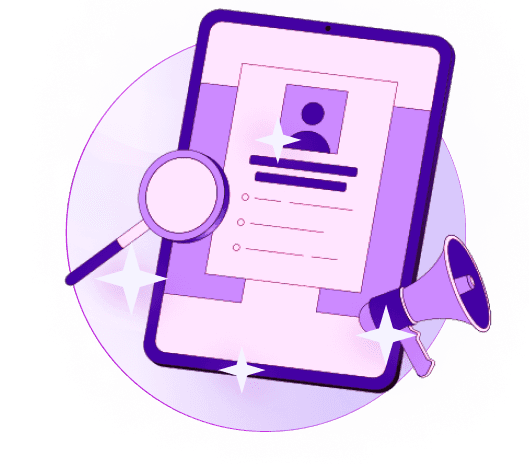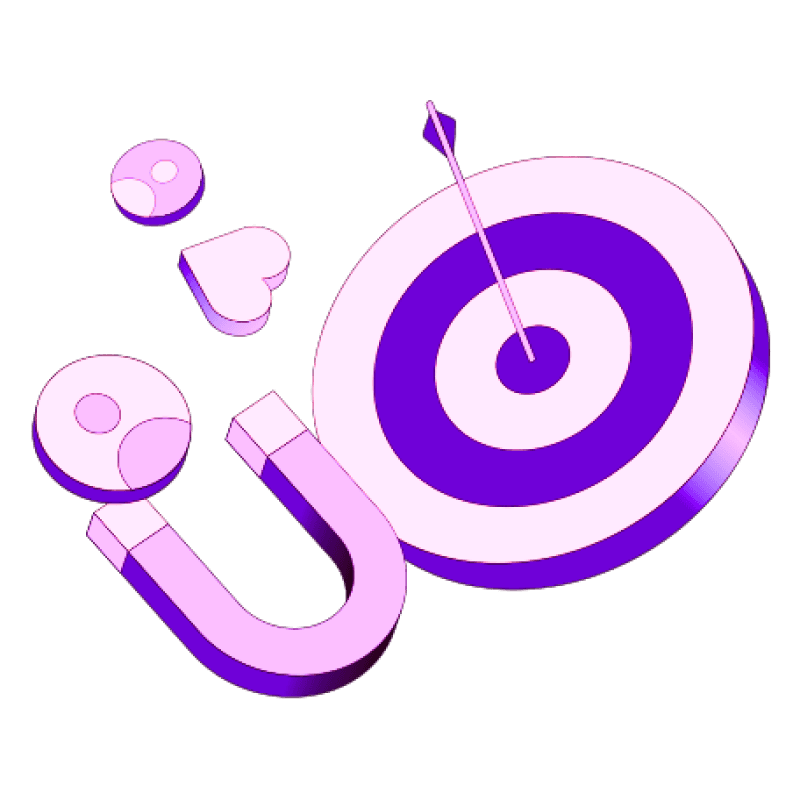Blogs
Articles

What is CRM Data Enrichment? Definition and Tools
Poor CRM data can waste your resources, create inefficiencies, and lead to bad decisions.
Your CRM system needs accurate data, and data enrichment provides exactly that solution. The process updates your existing lead information with extra data points and increases what you already have in your CRM system. A properly working customer data enrichment process gives you multiple advantages that improve your sales process by a lot.
This piece tucks into what CRM data enrichment means, its business impact, how it functions, and the best tools to begin with.
Let's explore how you can turn your simple CRM database into a powerful sales intelligence platform!
What is CRM data enrichment?
CRM data enrichment is a systematic process that increases and enhances customer records with relevant information from external sources. This method turns basic databases into detailed customer profiles and gives marketing and sales teams better insights.
The enrichment process updates old or wrong information with fresh, quality data to help you understand your customers better. On top of that, it fills gaps in your database without manual research.
Types of data enriched: demographic, firmographic, behavioral
Your CRM system can enrich several significant types of data:
Demographic Data: This has personal details like age, gender, income, education, and occupation. These details paint a clear picture of your individual customers.
Firmographic Data: Business information such as company size, industry, annual revenue, and business model make up this category. B2B companies find this especially valuable when targeting specific industries.
Behavioral Data: Customer actions like website visits, email responses, product usage, and purchase history fall into this category. These patterns show customer interests and how they interact with your business.
Why CRM Enrichment Matters?
Poor CRM data quality comes with a staggering price tag. Companies lose up to USD 3.00 of every USD 10.00 in revenue because of poor data quality. The situation becomes more alarming since 91% of CRM data turns incomplete, stale, or duplicated each year.
Most businesses don't realize how quickly data decays - a study revealed that 70.8% of business contacts changed at least one detail within just 12 months. Sales representatives waste about 27% of their potential selling time chasing incorrect leads.
But enriched CRM data delivers impressive returns:
Companies using contact enrichment see an average ROI of approximately 300%, and some see returns as high as 500%
Businesses with enriched data achieve up to 66% higher conversion rates and 38% shorter sales cycles
Organizations that excel at lead enrichment produce 50% more sales-ready leads at 33% lower cost
Enriched data makes customized experiences possible - a crucial advantage since 66% of consumers expect companies to understand their specific needs.
How CRM Data Enrichment Works?
CRM data enrichment mechanics turn simple contact details into complete customer profiles.
The process starts with cleansing and verification of existing data to spot inconsistencies, duplicates, and outdated information. This vital first step will give you the best return on investment instead of relying on poor-quality evidence.
Your CRM links to external data providers and enrichment platforms that collect information from trusted sources. These include public records, professional networks, company websites, and proprietary databases. The platforms update your data automatically through APIs or direct integrations. Updates happen immediately when new leads enter your system or in scheduled batches.
Waterfall enrichment checks multiple data sources one after another. The tool moves to the next source if data is missing from one. This improves accuracy and controls costs.
Data enrichment platforms can add demographics, technographics, firmographics, behavioral data, and contact information automatically. This works better than asking prospects to fill lengthy web forms that might turn them away.
Manual enrichment might seem economical at first when you research prospects individually. However, it costs substantially more time. Most teams choose enrichment software to automate the process. This creates resilient data from minimal input and lets your sales team focus on building relationships.
How does CRM data enrichment work?
Selecting the right approach for your business needs depends on how well you understand CRM data enrichment methods. Here are four simple ways to implement this process.
Manual enrichment
Your team members can gather and input missing data through hands-on research in manual enrichment. This method gives you full control over data quality and lets you customize as needed. While it's free and works well for small contact lists, it has major drawbacks. The process takes too much time, can lead to human errors, and doesn't scale well as teams grow.
Research shows that sales teams spend approximately 21% of their time on data entry and management.
Data enrichment tools
Software solutions like Clearbit, Clay, and Kaspr make the enrichment process automatic by pulling data from multiple sources to update your records. These tools can fill in missing fields automatically when you add simple contact details. The process is quick, scalable, and keeps your data fresh.
Third-party services
Data quality specialists can provide vetted information that combines smoothly with your CRM. They deliver detailed data points you might not find otherwise. Your team can focus on selling while experts handle the research.
API integrations
APIs connect your CRM directly to external databases and enable live data updates. Your records stay current because APIs refresh them whenever contact information changes. This approach updates data based on new signals and has smart deduplication features.
Top 5 CRM Data Enrichment Tools
The right tool is vital to implement CRM data enrichment successfully. Here are five top solutions you should think about:
1. Persana

Persana distinguishes itself with AI-powered waterfall enrichment that checks multiple data providers one after another until it finds the needed information. The platform links to over 75 data sources and delivers substantially better contact information than single-source solutions. Its PersanaVector™ Technology scores 76% higher in relevance compared to traditional search methods. The AI assistant Nia handles up to 90% of sales development tasks on its own. Persana has plans that work for teams of all sizes, starting at USD 68.00/month.
2. Clay

Clay works as a complete marketplace that brings together over 75 data providers on a single platform. You won't need to juggle multiple subscriptions while getting maximum data coverage. Clay's waterfall enrichment lets you pick which providers to check first, which helps balance coverage and costs. The platform's AI research assistant "Claygent" discovers information that other tools might miss. Plans begin at USD 149.00/month, and unused credits carry forward.
3. Kaspr

Kaspr shines with its large European database that holds over 200 million EU contacts from more than 150 verified sources. The Chrome extension helps collect LinkedIn data directly, and it works with HubSpot, Salesforce, Pipedrive, and Zoho. You can start with Kaspr's free plan, while paid options begin at USD 49.00/month.
4. FullContact

FullContact makes records better using 50+ billion identifiers across 10 different categories. The platform keeps track of 248 million profiles covering almost every US adult and updates 200 million records daily. The lightning-fast 40ms response time delivers up-to-the-minute enrichment. Each record gets up to 900 unique data points, including demographics, wealth information, and professional insights.
5. Clearbit

HubSpot bought Clearbit and rebranded it as Breeze Intelligence. The platform enhances data with 100+ B2B attributes from 250+ sources. Records update automatically when changes happen, keeping data fresh. Clearbit makes forms shorter by removing fields it can fill in automatically, which helps more people complete them. Credit-based packages start at USD 30.00/month.
Conclusion
CRM data enrichment plays a vital role in helping businesses get the most value from their customer data. As I wrote in this piece, enriching your CRM turns simple contact details into complete customer profiles that lead to smarter business choices. Without doubt, the advantages go beyond just better data quality. Companies see a 300% average ROI, 66% higher conversion rates, and sales cycles that finish by a lot faster.
Small databases might work fine with manual enrichment. Most companies, however, will get better results from automated solutions that cut down on time and deliver more precise data. Your specific needs and resources will determine whether you pick specialized tools, third-party services, or API integrations. The main goal stays the same - to build a single source of truth that enables teams with accurate, complete customer insights.
Take time to evaluate all the tools mentioned here before picking a solution. Many companies succeed with Persana because of its AI-powered waterfall enrichment approach and links to over 75 data sources.
On top of that, tools like Clay, Kaspr, FullContact, and Clearbit each bring unique benefits that might line up with what you need.
Bad data quality costs too much to ignore now. Companies lose big money because of incomplete or wrong information. Setting up a resilient data enrichment strategy isn't optional anymore - it's crucial to stay competitive in today's informed marketplace.
Note that data enrichment works as an ongoing process, not a one-time project. Customer details change all the time, so your enrichment strategy needs to adapt. Once you start using your chosen solution, you'll notice quick improvements in targeting accuracy, personalization options, and sales efficiency. These benefits grow stronger as your enriched database expands.
FAQ
Why is CRM data enrichment important?
CRM data enrichment helps businesses turn raw data into a powerful tool that connects with customers. Teams spend less time cleaning data and more time building client relationships because the system standardizes formats, fills missing fields, and removes duplicates.
Better data quality naturally guides teams toward smarter decisions and optimizes operations. The numbers speak for themselves - companies using enriched data see up to 66% higher conversion rates and their sales cycles shrink by 38%.
On top of that, CRM enrichment makes personalization possible - a vital factor since 66% of consumers want companies to know their specific needs. Customer profiles become more valuable when they include details about executive interests, passions, and career histories.
What types of data can be enriched?
CRM systems can enrich several categories of valuable data:
Demographic Information: Age, gender, income, education level, and occupation details
Geographic Data: Location, postal address, and regional information
Firmographic Data: Company size, industry, annual revenue, and location
Behavioral Data: Website visits, email engagement, purchase history, and product usage patterns
Technographic Data: Information about technologies and tools your customers use
Intent Data: Signals showing customer interest in specific products or services
Contact Information: Names, titles, emails, phone numbers, and social media profiles

Create Your Free Persana Account Today
Join 5000+ GTM leaders who are using Persana for their outbound needs.
How Persana increases your sales results
One of the most effective ways to ensure sales cycle consistency is by using AI-driven automation. A solution like Persana, and its AI SDR - Nia, helps you streamline significant parts of your sales process, including prospecting, outreach personalization, and follow-up.



